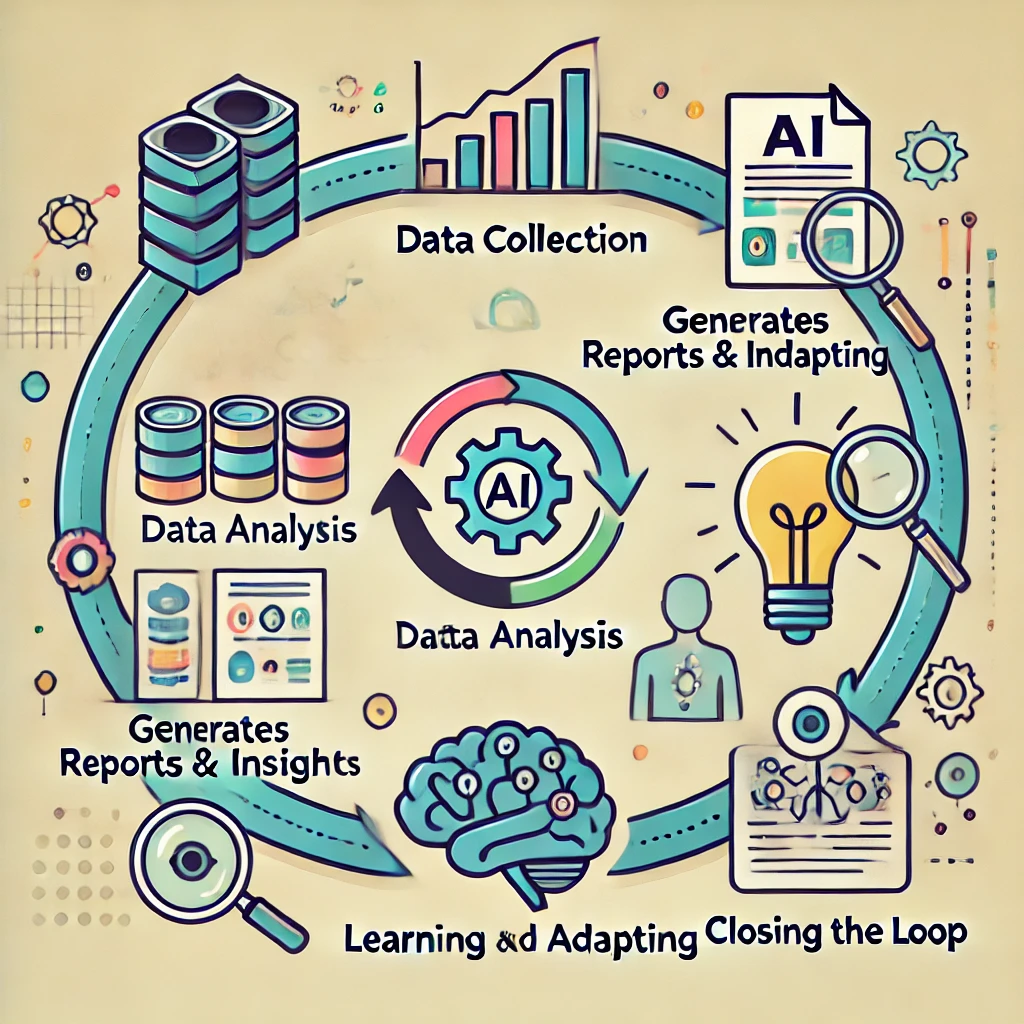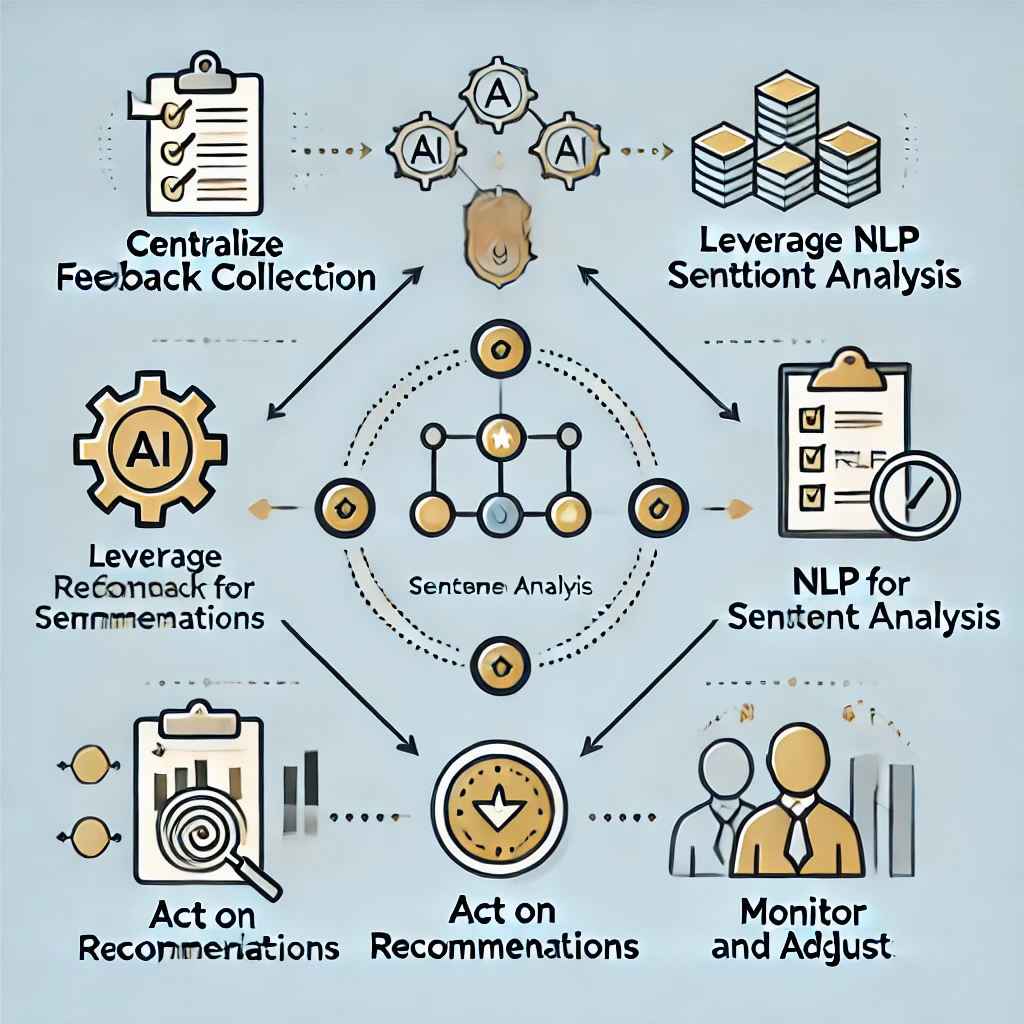AI Insights & Quick Answers
Deep dives, how-to guides, and rapid-fire solutions to level up your workflows
Elevate Your Business Game With Smarter No-Code Systems and AI Integration

The Feedback Loop Lifestyle: How AI Builds Your Informed Intuition
Introduction
AI feedback loops are often misunderstood as tools reserved for large corporations, leaving many individuals and small businesses assuming they lack the resources to harness them for continuous improvement. But what if AI feedback loops could also empower individuals and smaller organizations to make better decisions, leading to both personal growth and business success?
AI feedback loops offer powerful, accessible tools for both personal growth and business success. The answer lies in using accessible AI tools and strategies to transform how we gather, analyze, and act on feedback. By managing feedback to create actionable insights, people can build informed intuition and align their actions with their goals.
Noilyn Mendoza, from Radiant You, experienced just such a transformation. Initially struggling with exhaustion from her demanding work schedule, Noilyn was stuck in a cycle of constant site visits and overwhelming responsibilities. However, by embracing an AI feedback loop and leveraging tools for collaborative productivity, she regained clarity, energy, and creative focus. Noilyn’s story isn’t just about personal triumph; it’s a blueprint for how AI feedback loops can empower anyone to regain control over their time and energy.
This guide will explore how the AI feedback loop works, how it enhances decision-making, and how you can use it to build a smarter, data-driven approach to continuous improvement—no matter the size of your business or the scope of your personal goals.
What is the AI Feedback Loop?
The AI feedback loop is a continuous cycle in which customer feedback is collected, analyzed, and used to create actionable insights—a process where AI learns from data and improves with each cycle. This closed-loop system of improvement uses data to detect patterns, predict needs, and adapt products and services accordingly.
Why does this matter? Because by continuously refining products and services, an AI feedback loop helps businesses stay relevant and responsive to customer needs, driving growth and improving satisfaction.
Stages of the AI Feedback Loop
Data Collection
AI collects feedback from multiple sources, including social media, email surveys, customer interactions, and even third-party databases. This approach captures data seamlessly across all channels without switching between multiple tools.
Data Analysis
Once feedback is collected, AI tools analyze it by understanding the emotions and sentiments behind the words, highlighting what customers feel and need. The data analysis process helps pinpoint pain points, needs, and expectations. By categorizing sentiments as positive, negative, or neutral, companies can understand how their products and services resonate with users.
Generates Reports & Insights
AI systems generate reports, summarizing key insights and recurring themes. For example, sentiment analysis might reveal that a particular product feature is consistently receiving negative feedback. By understanding which areas impact customer experience the most, decision-makers can prioritize the changes that will have the highest impact.
Learning and Adapting
Feedback loops are dynamic; with each iteration, AI learns, adapts, and becomes smarter, refining its recommendations over time. As the system gains more data, it becomes better at identifying customer trends, predicting behavior, and developing increasingly accurate insights.
Closing the Loop
The final and most crucial step in the AI feedback loop is taking action based on AI-generated insights. Implement changes, monitor KPIs like customer satisfaction and engagement, and ask for feedback again. For example, if a company reduces friction points in the user interface based on customer complaints, they should track customer satisfaction to ensure improvements were effective. By consistently acting on these insights and monitoring results, businesses can ensure they’re not just collecting data, but using it to drive meaningful, customer-focused improvements.

How AI Builds Informed Intuition
Informed intuition comes from combining data with actionable insights. Over time, AI transforms scattered data into valuable business knowledge, shaping decision-makers' instincts based on accumulated information. In short, AI doesn’t just provide data; it helps leaders develop instincts that are sharpened by continuous, data-driven insights—making better decisions feel intuitive.
Here are key ways AI builds informed intuition:
Detecting Sentiment and Emotions: AI feedback loops categorize feedback by emotions—like happiness, frustration, or neutrality—giving businesses a clearer view of how changes are affecting customer sentiment.
Actionable Insights for Smarter Decisions: AI systems conduct impact analysis, identifying which aspects of your business have the most significant effect on customer experience. If users consistently cite product pricing as a key issue, this will be flagged in AI reports, enabling leaders to prioritize impactful changes. This data-driven approach gives decision-makers confidence when making critical business decisions.
Adaptation Through Learning: With each cycle, the AI feedback loop learns and becomes more adept at detecting sentiment, categorizing issues, and predicting future trends. This evolution leads to better alignment between business actions and customer needs—a key component of informed intuition.
Steps to Implement an AI Feedback Loop in Your Business
Centralize Feedback Collection: Identify key sources of customer feedback—social media, surveys, customer service tickets, etc.—and centralize collection using AI tools to automate the process. This ensures that you’re capturing every relevant insight without letting key data slip through the cracks.
Leverage NLP for Sentiment Analysis: Implement NLP tools to interpret text-based feedback effectively, categorizing data into actionable insights. By understanding how your customers feel, you can focus on what matters most to them.
Act on Recommendations: Use AI-generated reports to implement changes. Prioritize actions that address the most pressing customer needs. Target the areas with the greatest impact for maximum returns.
Monitor and Adjust: Track KPIs like satisfaction scores after changes are implemented. Collect follow-up feedback and refine processes to create a closed-loop system of learning and improvement. This continuous adjustment ensures you’re staying ahead of customer needs.

Case Study: Noilyn’s Transformation at Radiant You
Noilyn Mendoza, from Radiant You, exemplifies how leveraging the AI feedback loop can transform productivity and well-being. Initially overwhelmed by the demands of her work—exhausted from constant site visits and struggling with cloudy thinking—Noilyn became disconnected from the creativity that once energized her. Through collaboration with her team and the introduction of slow productivity practices and AI tools, Noilyn began integrating an AI-driven feedback loop into her routine.
By analyzing her workload and gathering insights through team feedback, Noilyn and her team were able to identify key areas where adjustments were needed. With guidance from her colleague David, she adopted slow productivity techniques—such as taking breaks for creative activities and allowing time for reflection—that brought her back into balance. The AI feedback loop helped her identify when to take breaks and where to focus her energy, ultimately boosting her mental clarity and energy levels.
Noilyn’s story demonstrates that AI feedback loops aren’t just about efficiency—they can be the key to balancing productivity with well-being, helping you thrive in both your work and personal life.
AI feedback loops offer a transformative way to manage feedback, enabling continuous adaptation and improvement. By adopting a system of collecting, analyzing, and acting on insights, individuals and businesses alike can adapt more intuitively to evolving needs and drive ongoing improvement. Whether you’re a company like Netflix or a professional like Noilyn at Radiant You, leveraging AI feedback loops can help you create a more balanced, informed, and successful journey.
Don’t wait to start building your own informed intuition. Take our free AI Readiness Assessment today to discover how AI can help you stay ahead, adapt faster, and thrive.

Most business owners are frustrated from wasting time and money. At Systems Shaper we turn your business into a selling machine. Clients who work with us attract more customers and build stronger brands.
Company
Services
Policies
Made With ❤️ By Systems Shaper
Systems Shaper Inc. © 2025. All rights reserved.
